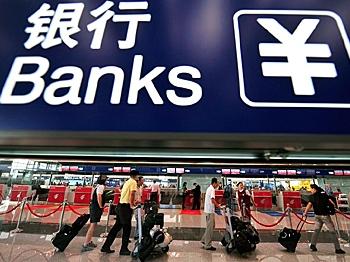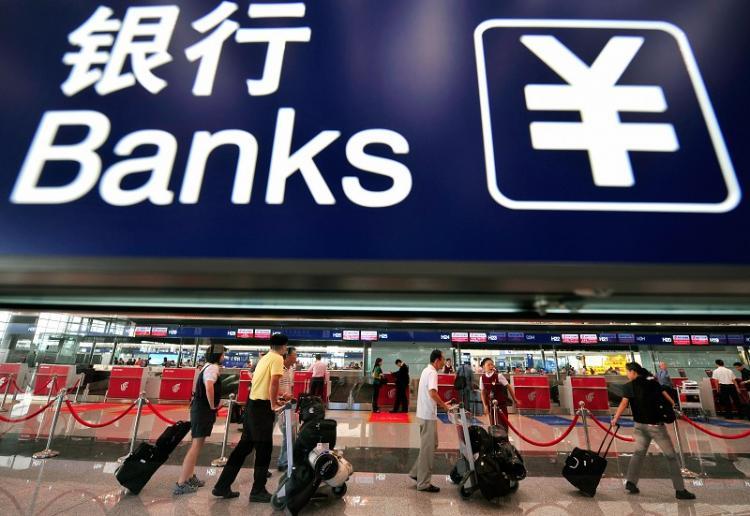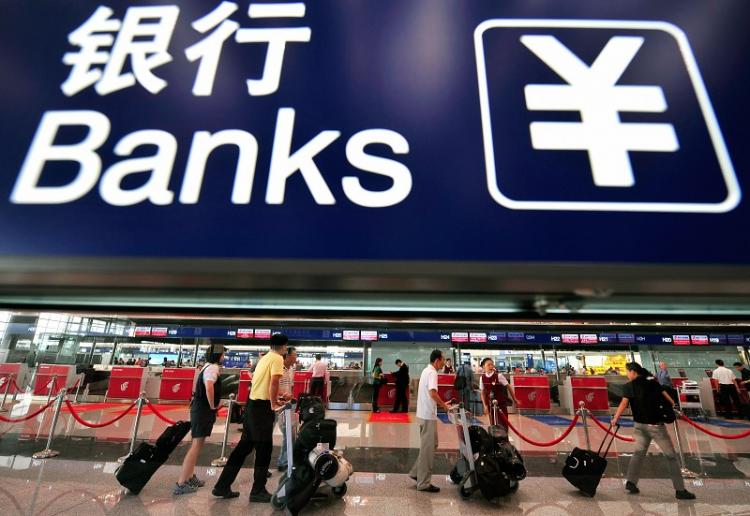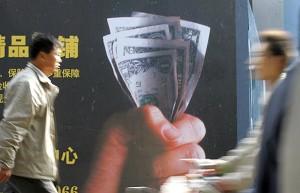The economic scale of the United States, the place where this worldwide financial crisis began, is six times larger than China’s, yet the United States federal government only launched a bailout plan to the tune of $700 billion, only 1.2 times as much as China’s bailout bill.
When looking at the magnitude of the financial crisis in the United States and China and the scope of the two countries’ rescue plans, it would appear that the Chinese government is more determined to rescue the market than the U.S. and wishes to work more efficiently.
The phrase “4 trillion yuan” has become a phrase people have begun to echo when they talk about the Chinese regime’s market rescue plan. If someone enters “4 trillion yuan” into any Internet search engine, thousands of hits will emerge. For example, an article entitled “Fiscal and Monetary Policies Launched at the Same Time, 4 Trillion Bailout Bill for Domestic Needs” shows on Xinhua.net and another “Eleven Financial Organizations Discuss the 4 Trillion Bill” is displayed on the Shanghai Securities News website.
In the midst of such a strong worldwide economic crisis, the news of China’s “4 trillion Yuan bailout bill” has naturally become the focus of both the investment and political arenas domestically and overseas.
The President of the World Bank, the Director-General of the International Monetary Fund, finance ministers and central bank governors from the Group of 20 (G20) have all made speeches at the annual meeting in Brazil to applaud the Chinese government’s large-scale bailout plan. Stock markets in the cities of Shanghai and Shenzhen have also been on the rise due to the news. When looking at this, one could say that China’s rescue plan has served as a market stimulant.
However, to someone who has even a minor amount of economic knowledge would begin to think this “4 trillion yuan” bailout bill is actually quite suspicious.
The first question that arises is the source of the bailout funds. Although the government had never explained where the 4 trillion yuan would come from, if we analyze China’s current economic strength, it is not difficult to see that Chinese authorities are unable to extract that amount of money within the next two years.
China is a developing country. Last year’s Gross National Product (GNP) was 24.5 trillion yuan ($3.6 trillion) while China’s annual income tax revenue is nearly 5 trillion yuan ($735 billion). This presumed bailout bill is equal to 16 percent of China’s GNP and 80 percent of its income tax revenue.
On the other hand, the bailout bill proposed in the United States is only equal to 5 percent of last year’s GNP and 28 percent of income tax revenue. Furthermore, if the Chinese regime strictly abides by and enforces the existing financial laws and regulations to control the size of the national deficit, they have no way to get the funds at all.
The other factor that raises doubt is, why would China need so much money for their bailout? The biggest difference between fiscal and monetary policies is that any amount of financial investment will account for that year’s GNP. In other words, if the 4 trillion yuan bailout package is legitimate, then China’s GNP this year would increase by 16 percent on top of last year’s, or 6 percent annually over the next two years.
In addition to the seemingly accelerated economic growth, its annual growth rate would be 14 percent in the next two years. If this is true, then rather than being a bailout package, this “4 trillion” would instead become an economic growth stimulation program.
Based on this, it is not difficult to see that the Chinese government’s “4 trillion yuan bailout program” is in fact a campaign to stimulate the financial market. From recent explanations given by officials from the National Development and reform Commission, Chinese authorities can only afford 1.1 trillion yuan as additional investment and are hoping to generate the 4 trillion yuan from the society.
In fact, I find it highly doubtful that the Chinese authorities can afford 1.1 trillion yuan without increasing the budget deficit in the first place. If an increase of the budget deficit is inevitable, it will be hard to bring along social investment. Moreover, personal investments will be suppressed as a result of a “crowding-out effect,” and will thus have a negative impact on China’s economic system and economic efficiency.
The Chinese state-run media outlets sensationalizing of the “4 trillion yuan bailout” is an attempt to mislead public opinion. It is very dangerous for a government to manage the economy by misleading the populace. As soon as a great discrepancy develops between the government’s actual behavior and the anticipations generated by the influence the masquerade had built up, the effect on the economy will be disastrous.
On top of that, the “highest authority” on these issues, the National People’s Congress’s Financial and Economic Commission didn’t even have a hand in making such an important decision, nor have they made any efforts in correcting the misleading propaganda.
Read this article in Chinese. http://www.epochtimes.com/gb/8/11/15/n2330537.htm




